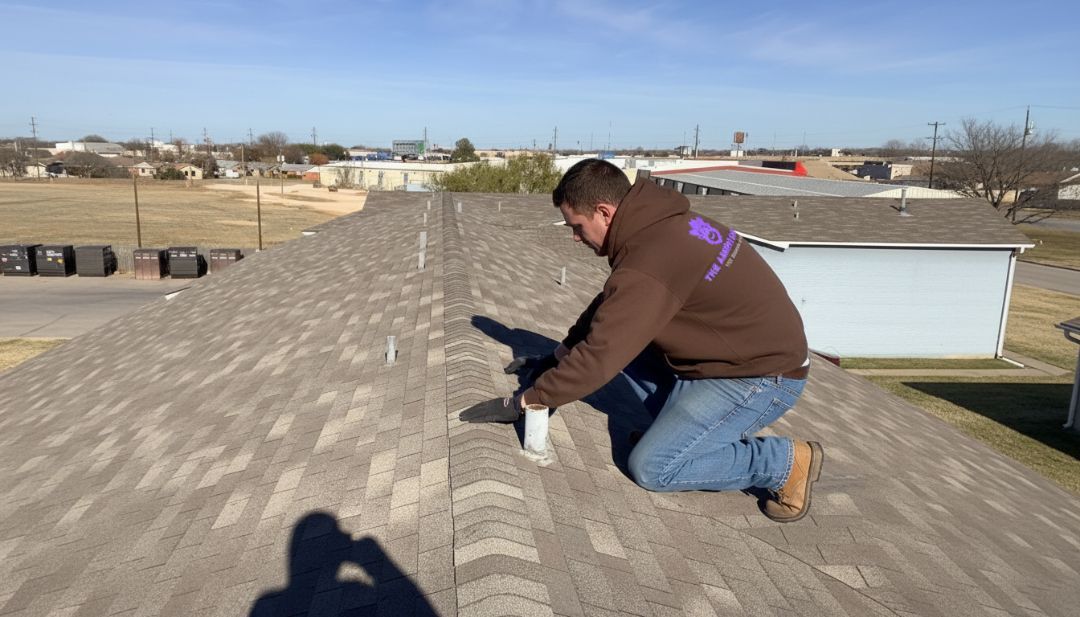Should You Schedule a Roof Inspection Every Year?
TLDR;
Yes — scheduling a roof inspection every year is strongly recommended. It helps catch minor issues before they become costly repairs, keeps your roof warranty valid, and ensures you’re protected from weather damage and insurance claim denials.
Why Annual Roof Inspections Matter in Texas
Texas roofs face harsh conditions — from scorching summers and UV exposure to sudden hailstorms and high winds. These extremes can quietly damage your roof even if you don’t see immediate signs. Annual inspections help detect those problems early, especially in places like DFW, Houston, and Central Texas, where storm patterns are unpredictable.
Many homeowners delay inspections because they believe common roofing myths to avoid, like “new roofs don’t need maintenance” or “insurance covers everything.” In reality, neglecting annual checkups can result in voided warranties, denied insurance claims, and preventable damage that spirals into costly repairs.
An annual check is not just about spotting damage — it's about preserving the structural integrity of your entire home.
What Does "Every Year" Actually Mean?
A yearly inspection means having a professional assess your roof once every 12 months. But that doesn’t mean you should ignore it the rest of the year. You should also inspect:
- After major storms like hail or strong winds
- When buying or selling a home
- If your roof is over 10 years old or was recently installed
- If you've noticed leaks, sagging, or missing shingles
In higher-risk regions like North and Central Texas,
twice a year (spring and fall) is even better. Think of it like a dental cleaning — once a year is good, but more is better if you’re exposed to higher risks.
Roof Inspection Frequency by Roof Material & Age
Not all roofs are created equal — the material and age impact how often they need attention.
Asphalt Shingles (most common in TX):
- Inspect
annually, especially after storms
- Expect a lifespan of 15–30 years
Metal Roofs:
- Inspect
every 1–2 years
- Long-lasting but still vulnerable to flashing or sealant failures
Tile Roofs (clay/concrete):
- Check
annually for cracked
tiles, especially post-hail
- Underlayment is key — that’s what usually fails
Wood Shakes:
- Check
every year for rot, pest activity, or splitting
Flat/Low-Slope Roofs:
- Must be inspected
twice yearly due to drainage issues
Older Roofs (15+ years):
- Twice a year recommended
- Materials degrade faster with age
When’s the Best Time for a Roof Inspection?
Spring and Fall are ideal in Texas.
- Spring: Catch damage from winter cold or storms
- Fall: Ensure your roof is ready for upcoming cold snaps or high winds
- After hailstorms or hurricanes: Immediate inspection is critical
- Before major
repairs, upgrades, or selling your home
Avoid summer inspections if possible — not because of danger, but because scorching heat can hide some of the visual signs of wear.
Beyond Repairs: The Hidden Benefits of Roof Inspections
Inspections are more than just fixing what’s broken. They offer several critical advantages:
1. Insurance Protection
- Insurers may deny claims for “lack of maintenance”
- Annual inspections create documentation that proves diligence
2. Warranty Compliance
- Some roofing material manufacturers
require inspections
- Without them, your warranty could be voided
3. Energy Efficiency
- Poor ventilation or hidden leaks can drive up HVAC costs
- Catching insulation and ventilation problems early keeps energy bills down
4. Extended Roof Lifespan
- Prevents small issues (like cracked flashing or gutter backup) from becoming large ones
- Delays full
roof replacement by years
5. Peace of Mind
- Know your home or commercial building is secure
- Especially important if renting out, leasing, or managing multiple properties
What You Can Check vs. What Pros Catch
You can do basic visual inspections safely from the ground or using binoculars:
- Look for missing or curled shingles
- Check gutters for shingle granules
- Notice any sagging or dark spots on the roof
- Inspect the attic for signs of leaks or water staining
But professionals spot things you can’t:
- Flashing separation
- Vent boot cracks
- Moisture inside underlayment
- Hidden hail impact damage
- Early signs of mold or ventilation issues
DIY checks are good —
professional inspections are essential.
Modern Tools Professionals Use
Technology has transformed how roof inspections are done.
Drone Roof Inspections
- Safely inspect steep or hard-to-reach roofs
- High-resolution imagery reveals surface damage
Thermal Imaging Cameras
- Detect moisture trapped under shingles
- Useful for spotting insulation gaps or rot
Moisture Meters
- Measure water content in roof materials
- Helps determine if water penetration occurred
Inspection Software with Reporting
- You’ll get a report with photos, damage grading, and repair recommendations
This data becomes your record — helpful for warranties, home sales, and insurance.
What’s the Cost of a Roof Inspection in Texas?
Prices vary based on size, roof pitch, location, and if tech tools are used.
- Basic inspection (no tools): $125 – $250
- Drone or thermal add-ons: $200 – $450
- Bundled with maintenance: $300 – $600
Some companies waive the inspection fee if you proceed with a repair.
Inclusions often cover:
- Shingle condition
- Flashing, vents, and sealants
- Gutter and drainage
- Attic moisture or insulation issues
- Ventilation and exhaust check
If you manage multiple properties, many roofing companies offer annual service contracts for discounted pricing.
Commonly Missed Problems Found in Annual Inspections
Here’s what people often miss when they skip inspections or try DIY:
- Underlayment Deterioration: The hidden layer under shingles that stops water
- Ventilation Blockages: Cause moisture buildup and early roof failure
- Cracked Flashing: Major cause of leaks
- Pest Intrusions: Squirrels, birds, or insects damaging eaves or insulation
- Moss/Algae Growth: More than cosmetic — it traps moisture
- UV Damage: Especially on flat or aged
asphalt roofs
Ignoring these signs can lead to early roof failure, mold, and structural compromise — and eventually a full
roof replacement cost that could have been avoided with routine inspections.
Signs You Need to Call a Pro Immediately
Some issues require urgent attention:
- Recent
hailstorm, especially with visible dents on vents or gutters
- Water stains on ceilings or in attic
- Shingle debris in your gutters or yard
- Sagging roofline or soft spots when walking
- Moldy or musty attic smell
- Rapid spike in energy bills without explanation
Even if it hasn’t rained, moisture may be accumulating under your shingles or inside walls.
Who Should Inspect: Contractor or Independent?
You have options when hiring an inspector:
Roofing Contractor Inspection
- Often free or low-cost
- May be biased toward finding problems that need fixing
- Best if you already suspect damage or want a repair quote
Independent Certified Roof Inspector
- Neutral party — ideal for insurance or warranty claims
- May cost more, but offers detailed reports with no pressure to sell
- Useful for real estate transactions or documentation
Look for:
- HAAG Certification (for storm inspectors)
- Local licensing and insurance
- Positive regional reviews
- Experience with your roof type and local code
FAQs About Annual Roof Inspections





